Plant growth regulators in barley 2015 and 2016
Author: Rachel Norton, Linda Bailey, Denielle Kilby and Anthony Mitchell, Northern Grower Alliance | Date: 07 Mar 2017
Take home messages
- Plant growth regulators (PGRs) have shown inconsistent results in terms of crop responses and lodging reduction.
- Mixing partners with Moddus® Evo showed no advantage over the use of Moddus Evo alone.
- In a wet, favourable year, the use of PGRs can aid in reducing the incidence and severity of lodging in susceptible barley varieties and have positive effect on yield however, multiple applications may be required.
- PGRs can have substantial impact on crop height; however, the response in terms of crop yield can be variable.
Background
NGA have been involved in work to help validate plant growth regulator (PGR) options in barley under northern conditions. Trial work started in 2015 from interest in their use and fit due to the potential of a higher rainfall winter season outlook. Growers and agronomists from the higher rainfall areas east of Moree were keen to see if PGRs could be tool they could use in wet years to reduce lodging in barley and improve yields and harvestability.
Use of PGRs was occurring but there was little validation on effectiveness or whether they were an economical option. A single trial was established near Moree in Commander barley in 2015 assessing Moddus Evo performance. Despite favourable conditions for lodging when treatments were applied little to no lodging occurred and there was continued interest from a number of local research groups to expand on the work in 2016.
Three trial sites were established in 2016, one each at Mount Tyson, Croppa Creek and Boggabri. The Croppa Creek and Boggabri sites both showed significant levels of lodging. The Mt Tyson site showed only low levels of lodging.
Visual lodging assessments, crop height, NDVI readings, yield and grain quality were evaluated for all trial sites.
2015
A single, four replicate trial established in a commercial paddock of Commander barley evaluated a range of Moddus Evo rates (200, 300 and 400mL) at two application timings, crop growth stages GS32 and GS37. The trial also contained two treatments where 100kg/ha of Urea was applied to enhance the lodging effect, one in combination with a Moddus Evo application.
The first application was applied on July 9 at majority GS32 or second node and the second application was on August 4 at GS37 or flag leaf just visible. The applications of urea were spread by hand over the treatment plots at GS32.

Figure 1. NDVI assessment September at Moree 2015 trial site
NDVI (Normalised Difference Vegetation Index) readings were taken on the 11th August and 10th September. No significant crop responses were found at the first timing in August. At the September assessment there was a clear trend to reduced NDVI ratios from all rates of Moddus Evo applied at GS32, however the 300mL rate was the only treatment that was significantly lower than the untreated.
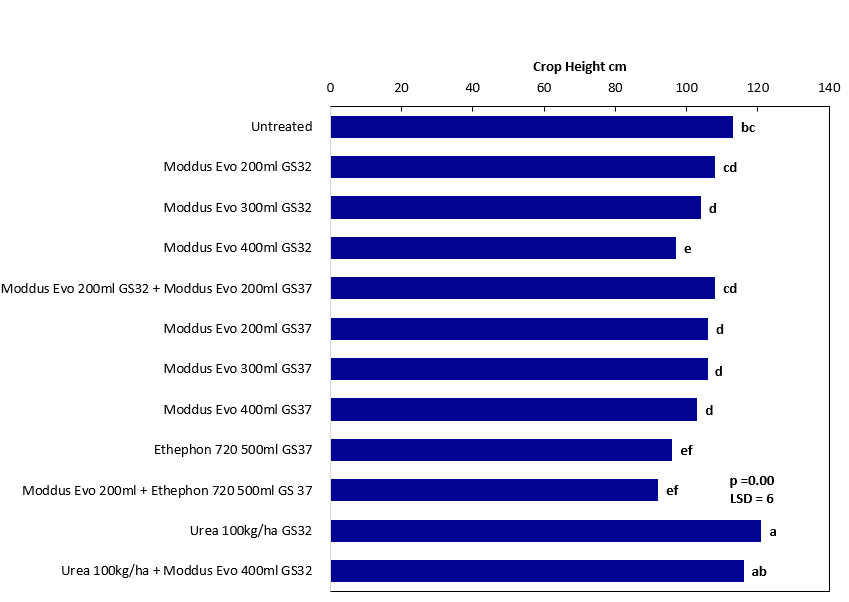
Figure 2. Measurement of crop height (cm) Moree September 10, 2015
There was a clear trend to all PGR treatments reducing height compared to the untreated. There was also a rate response in the Moddus Evo application at GS32 with the 400mL reducing crop height more than 300mL and 200mL rates. The two ethephon treatments at GS37 and the 400mL Moddus Evo rate at GS32 had the shortest crop heights.
There was no significant lodging at the site therefore an evaluation of treatments was not possible. However, the site was harvested with yield and grain quality assessed.
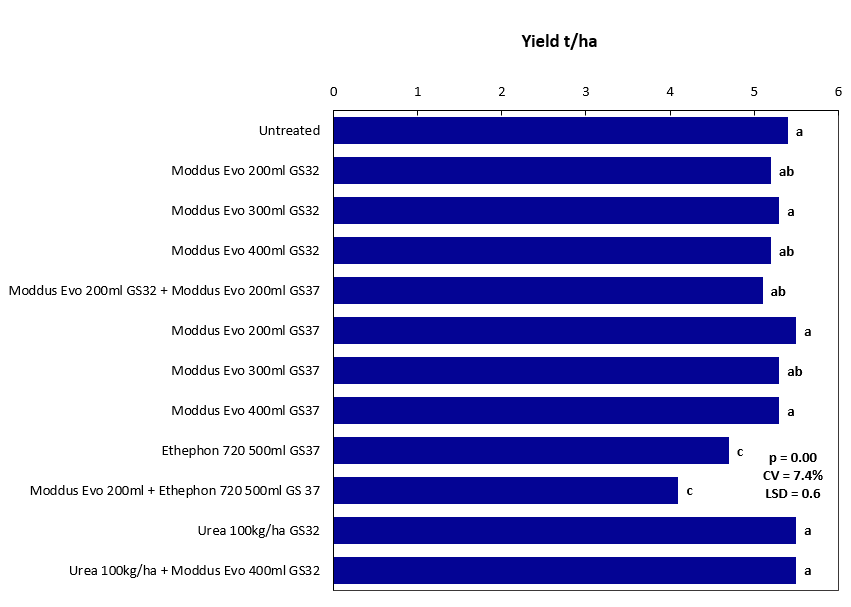
Figure 3. Yield (t/ha) from Moree 2015 trial site
Yield data shows there was no significant yield increases from any PGR treatment. The two ethephon treatments significantly reduced yield when applied at GS37.
Grain quality data showed no significant impact from the PGR treatments in terms of protein, test weight or screenings.
2016
Due to the lack of lodging in the 2015 trial, another three sites were established in commercial barley in 2016. The sites located at Mt Tyson on the Darling Downs, Croppa Creek and Boggabri were established on three different barley varieties. The trials again primarily looked at applications of Moddus Evo at 200, 300 and 400mL rates at two timings GS30-32 and GS37 and in split applications. Four other treatments were also included, these included two PGR products either as a mixing partner with Moddus Evo or alone. These results are not shown as they are not registered for use in barley.
Also included were two treatments where urea was added at 100kg/ha to enhance the potential for lodging, one in combination with a single application of Moddus Evo.
NDVI readings, crop height, lodging score, yield and grain quality were assessed at all three sites.
Croppa Creek
This site was established in Compass barley with the first application, including the hand spreading of Urea, on the 1st July at GS30 (jointing). The second application was applied on 29th of July at GS37 (flag leaf tip visible). NDVI readings conducted on the 10th August indicated minor crop effects from the higher rates of Moddus Evo and with the mixing partner treatments.
Crop heights were measured on the 17th August (early flowering) with significant height reductions (7-10cm) seen in the 300 or 400mL Moddus Evo GS30 applications and the split application of 200mL GS30 followed by 200mL GS37.). The trial was assessed at multiple timings for lodging and scored using the percentage of crop lodged by the severity or ’angle’ of lodging.
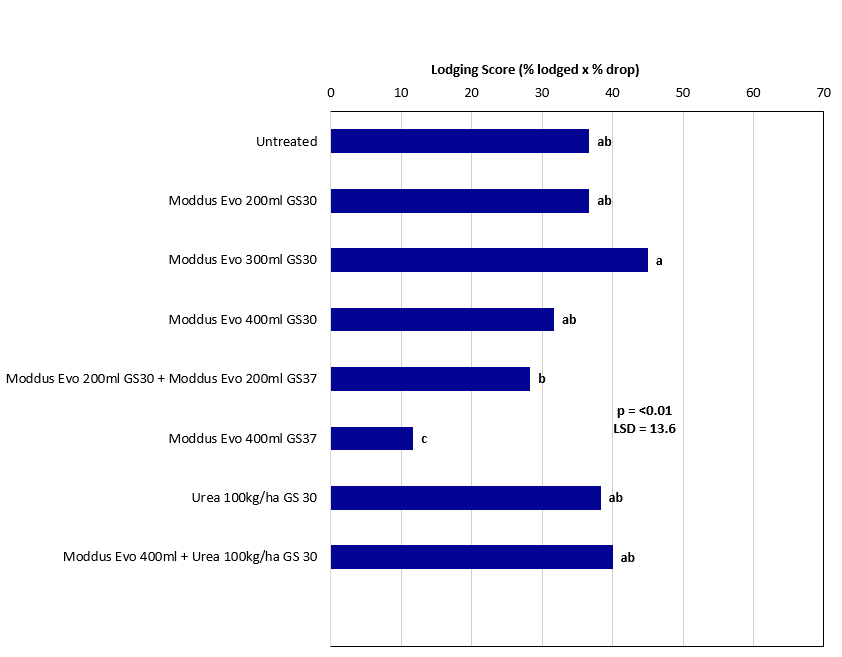
Figure 4. Assessment of lodging Croppa Creek 13th October 2016 at GS87 (hard dough)
Significant amounts of lodging were apparent by full flowering in early September and by early
October lodging was visible in all treatments.
At this late stage in the crop, the 400mL rate of Moddus Evo applied at GS37 was the only treatment that significantly reduced the levels of lodging. The split rate applied at GS30 and GS37 appear to have reduced the amount and severity of lodging but was not significant. No treatments prevented lodging completely.
While some treatments had an impact on the reduction of lodging, the impacts on yield appeared less clear.
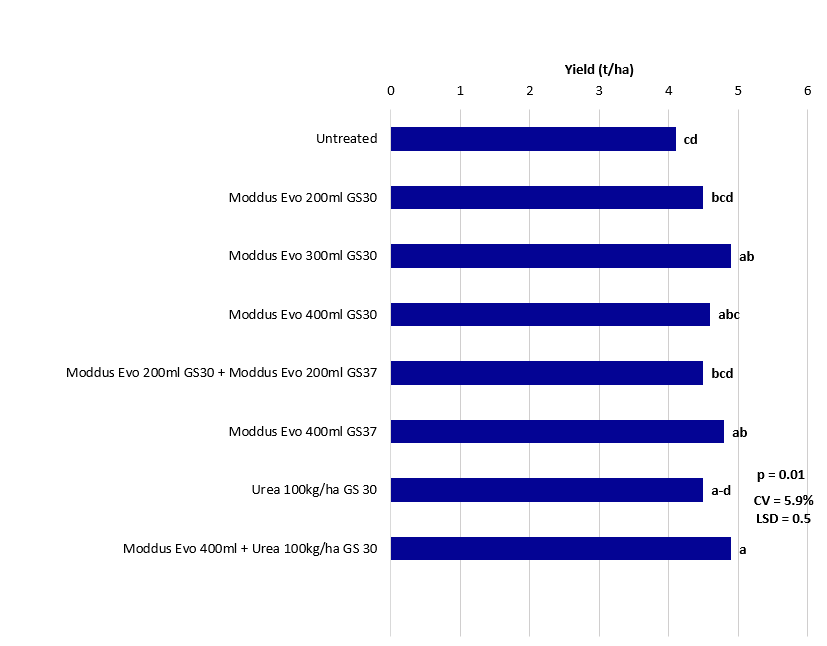
Figure 5. Yield (t/ha) Croppa Creek trial site 2016
A significant yield benefit was seen in the 300mL Moddus Evo rate at GS30 and the 400mL rate applied at GS37 when compared to the untreated. The most substantial benefit saw an 800 kg/ha increase in yield. Moddus with mixing partners (not shown) did not show any advantage over Moddus Evo applied alone.
Boggabri
A second trial site was established near Boggabri in a commercial paddock of Commander barley planted 5th May. The first treatments were applied on the 17th July at GS32 (second node) with the following treatments applied 17th August when majority of the crop was GS35-37 (tip of flag leaf visible). No NDVI was taken at this site and the first assessment was of crop height on 31st August at GS39 (full flag leaf emergence). Similar reductions in crop height were shown between this trial site and that of the Croppa Creek site with the 400mL rate of Moddus Evo having the greatest effect.

Figure 6. Assessment of lodging Boggabri trial site 2016
Though not as severe as the Croppa Creek site, the amount of lodging was still significant. A lodging score taken on the 7th November immediately prior to harvest shows a rate response in the single Moddus Evo treatments applied at GS32. As expected, the treatment of added Urea significantly increased the rates of lodging with the Moddus Evo 400mL rate only partly effective in offsetting the impact of additional nitrogen on lodging. All the PGR treatments reduced the severity of lodging when compared to the untreated.
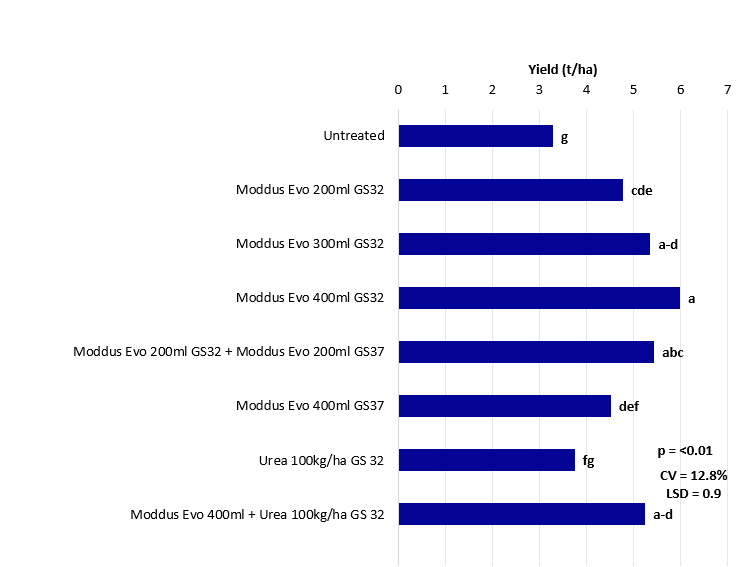
Figure 7. Yield (t/ha) Boggabri 2016
All treatments except the added Urea treatment alone provided an increase in yield when compared to the untreated. The 400mL rate of Moddus Evo applied at GS32 recorded a large increase of 2.7t/ha over the untreated.
There were no significant effects on test weight or screenings at this site. The effects on protein were minimal with the added Urea treatments recording the highest protein (10.2-10.6%) but were not significantly different to the untreated.
Mt Tyson
The third of the 2016 trials was established in commercial Oxford barley, planted 15th June at Mt Tyson on the Darling Downs. The first of the PGR applications were applied on 17th August at GS31 or first node. With the second application being at GS33-37 (third node to flag leaf tip emerging) on the 31 August. A measurement of crop height was taken on 12th October with significant height reductions (5-6cm) only observed from treatments that included ethephon. However, NDVI readings taken 19th October showed no significant difference in crop responses between any treatments.
Only a very small amount of lodging was seen at this site, which could be a reflection on the variety as Oxford is rated has having ‘good’ straw strength. A lodging assessment taken on 19th October showed no difference between any of the treatments. There was also no significant difference in yield or grain quality between any of the treatments.
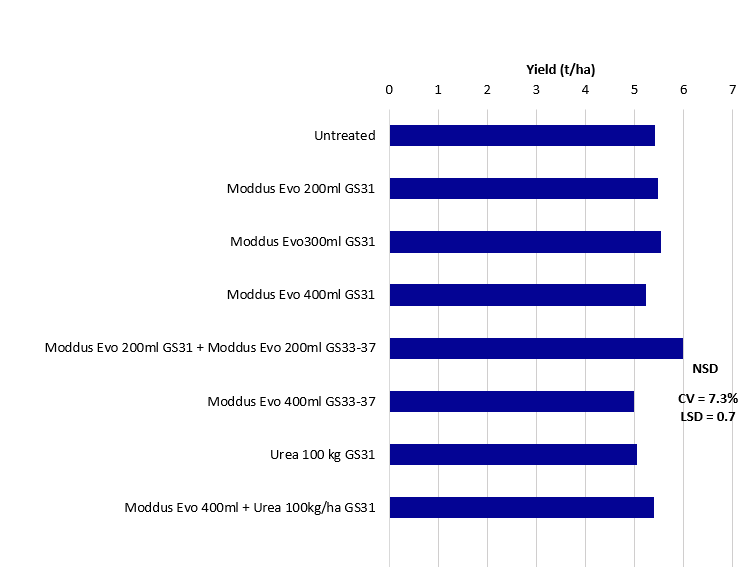
Figure 8. Yield from Mt Tyson PGR site. There was no significant difference between treatments.
Economics
While a benefit can be seen in a year such as 2016 with increased lodging for situations like those at Croppa Creek and Boggabri in terms of yield increase and improved harvestability, can these benefits outweigh the cost of product and application?
Croppa Creek
- Despite all Moddus Evo treatments recording higher yields than the untreated, only two were significant. The 300mL rate applied at GS32 gave a yield benefit of 800kg/ha and the 400mL rate applied GS37 an increase of 700kg/ha. Using 2016 feed grade barley price delivered Moree of $151/t together with application costs; these treatments achieved a net benefit of $95/ha and $74/ha respectively.
Boggabri
- While it is unclear what was driving this response, this trial saw unexpectedly high yield benefits from all Moddus Evo treatments. Yield increases ranged from 1.2 to 2.7t/ha more than the untreated. Grain quality data shows barley made malt grade at $163/t delivered Moree in 2016, a net benefit of ~$164 to $400/ha was possible.
Mt Tyson
- There was no significant difference in yield therefore or economic benefit.
Moree
- There was no significant difference in yield between treatments of Moddus Evo alone, however there was a significant yield reduction of 700 and 1300kg/ha in both applications of ethephon at GS37. Grain quality showed barley made malt grade with the 2015 malt barley price delivered Moree of $216/t, together with product and application costs of $11/ha this gave a negative net benefit of ~ - $140 to - $270/ha.
Net benefits based on 2016 barley price delivered Moree -Oxford & Compass – feed $151/t Commander – malt $163/t
2015 malt barley $216/t delivered Moree
Application Cost = Moddus Evo $17.79 at 300mL rate and $23.73 at 400ml rate, ethephon $2.80 at 500mL rate
Cost includes an $8/ha contractor application.
In a season such as the one in 2015 and at the Mt Tyson site where no positive yield benefit was seen, due little to no lodging present, there was no economic benefit in applying a PGR. In fact, a yield and economic penalty was seen in some of the treatments.
For the sites at Boggabri and Croppa Creek where positive yield benefits were seen, in a year where the lodging risk is high for a susceptible variety there appears to be some economic benefit to applying a PGR.
Conclusions
The use of PGRs in a conducive season does appear to have a mostly positive benefit in the reduction of lodging in susceptible varieties and may result in improved harvestability and yield benefits. The risk is identifying what approach to take when we cannot be certain of the forthcoming conditions for the season and whether they will lead to increased lodging in susceptible varieties. The results so far have shown large variability in all trials suggesting that the success of the PGRs is very much dependent on conditions and variety. Also included in these trials were a number of Ethephon treatments, both alone and as a mixing partner with Moddus Evo. No advantage was seen in these trials from its use either alone or as a mixing partner with Moddus Evo in reducing lodging or improving yields.
While it can be difficult to predict the outcome of a season, should conditions for lodging potential be possible, a useful tactic could be the use of multiple applications at a lower rate. In the 2016 trials the 200mL Moddus Evo treatment applied at stem elongation to second node (GS30-32) followed by another 200mL application later at early flag (GS37) proved effective at reducing lodging incidence while still having a yield improvement over untreated at Croppa Creek and Boggabri, similar to that of the higher single application rate. This approach may help to spread the risk and reduce any losses, both crop and economic, should the season change and lodging risk decrease.
Acknowledgments
The research undertaken as part of this project is made possible by the significant contributions of growers through both trial cooperation and the support of the GRDC; the authors would like to thank them for their continued support.
Contact details
Rachel Norton
Northern Grower Alliance
Ph: 0447 924 917
Email: rachel.norton@nga.org.au
® Registered trademark
GRDC Project Code: NGA0004,
Was this page helpful?
YOUR FEEDBACK
